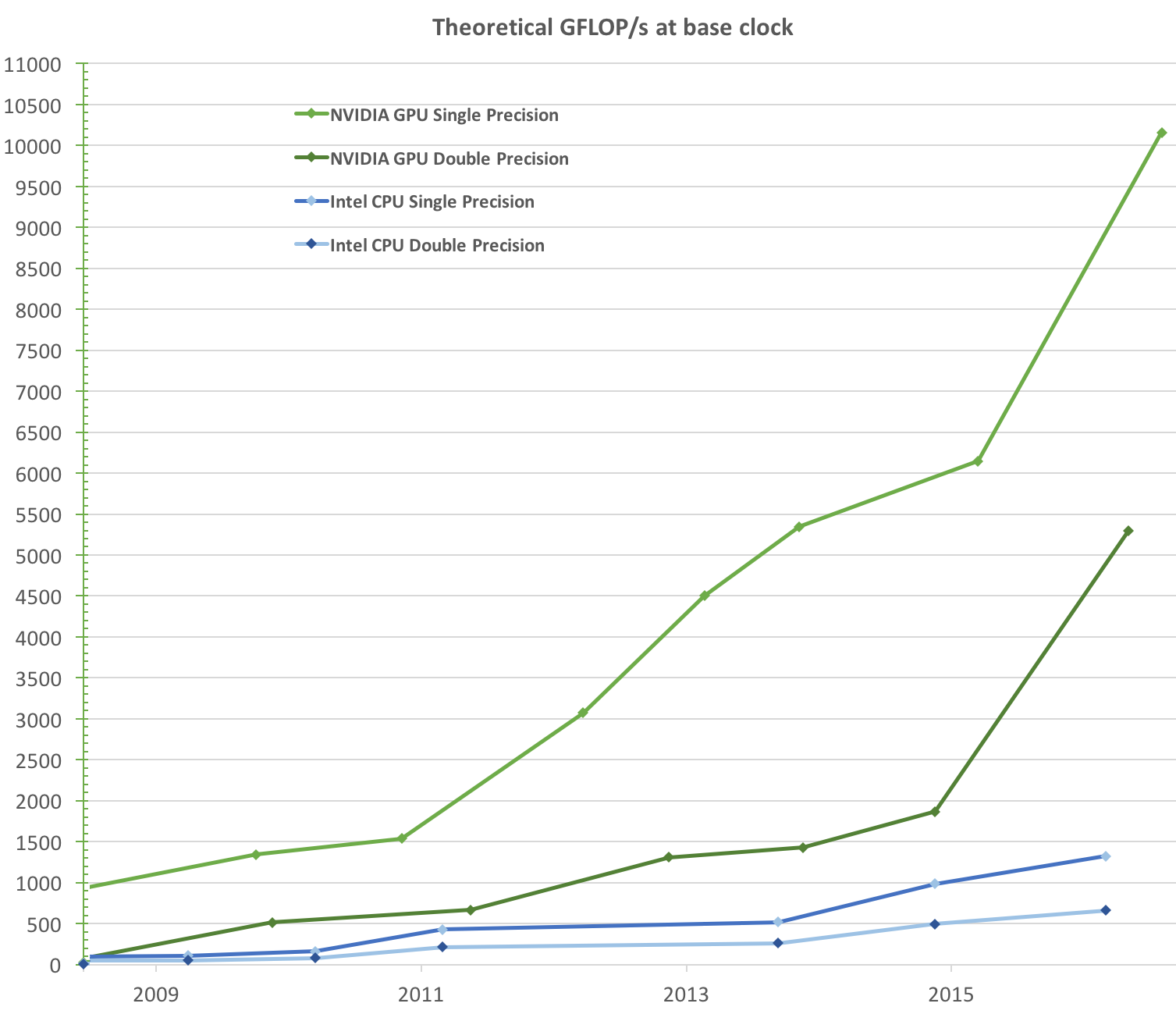Performance: GPU vs. CPU
GPUs and CPUs are intended for fundamentally different types of workloads. CPUs are typically designed for multitasking and fast serial processing, while GPUs are designed to produce high computational throughput using their massively parallel architectures.
The chart below, which is adapted from the CUDA C Programming Guide (v.9.1), shows the raw computational speed of different CPUs and GPUs. The purpose of the figure is to show the computational potential of GPUs, as measured in billions of floating-point operations per second (Gflop/s). One can ask: given a device that delivers such impressive floating-point performance, is it possible to use it for something besides graphics?

Note, "single precision" refers to a 32-bit representation for floating point numbers (sometimes called FP32), while "double precision" refers to a 64-bit representation (FP64). Single precision numbers can often be processed twice as fast as the longer doubles.
CVW material development is supported by NSF OAC awards 1854828, 2321040, 2323116 (UT Austin) and 2005506 (Indiana University)